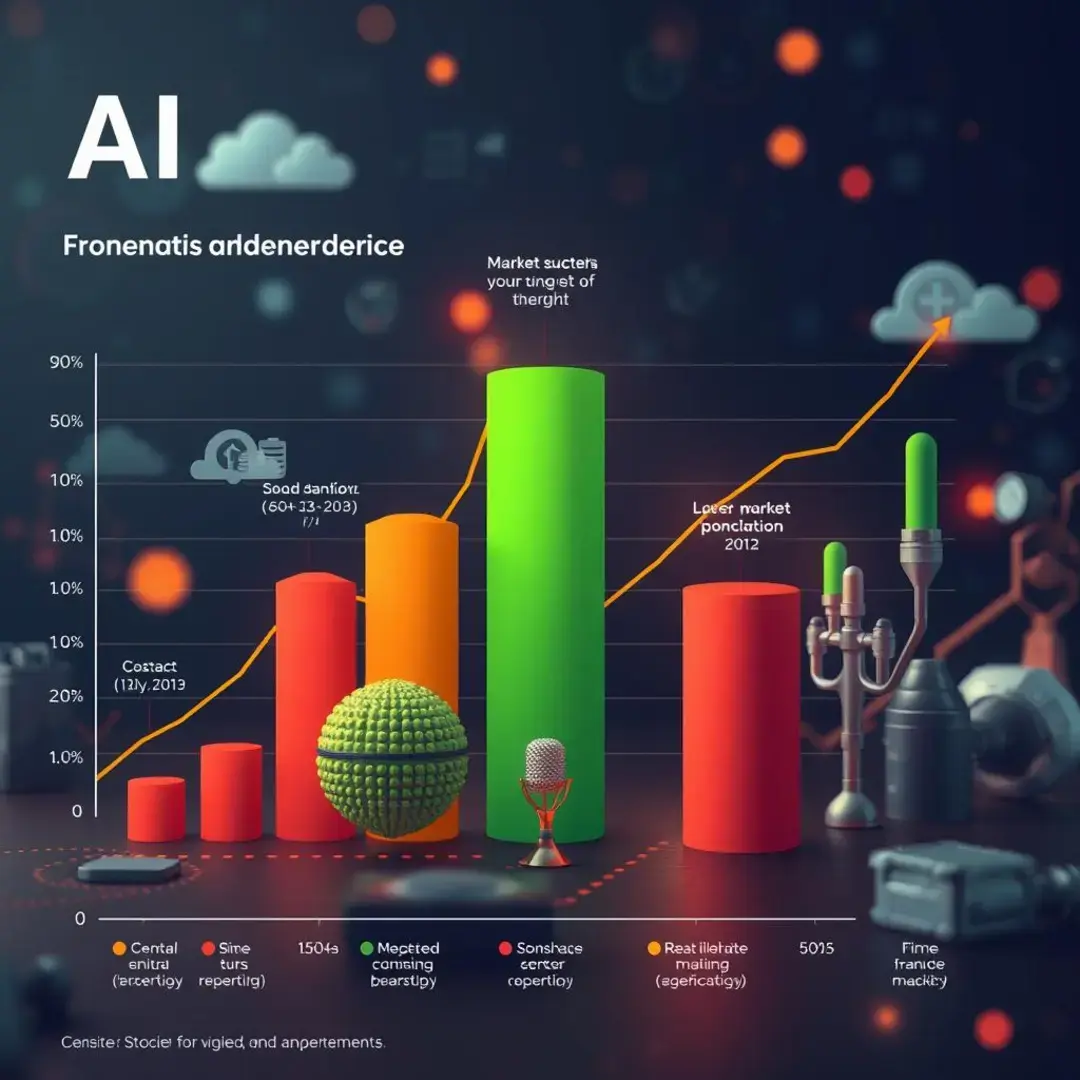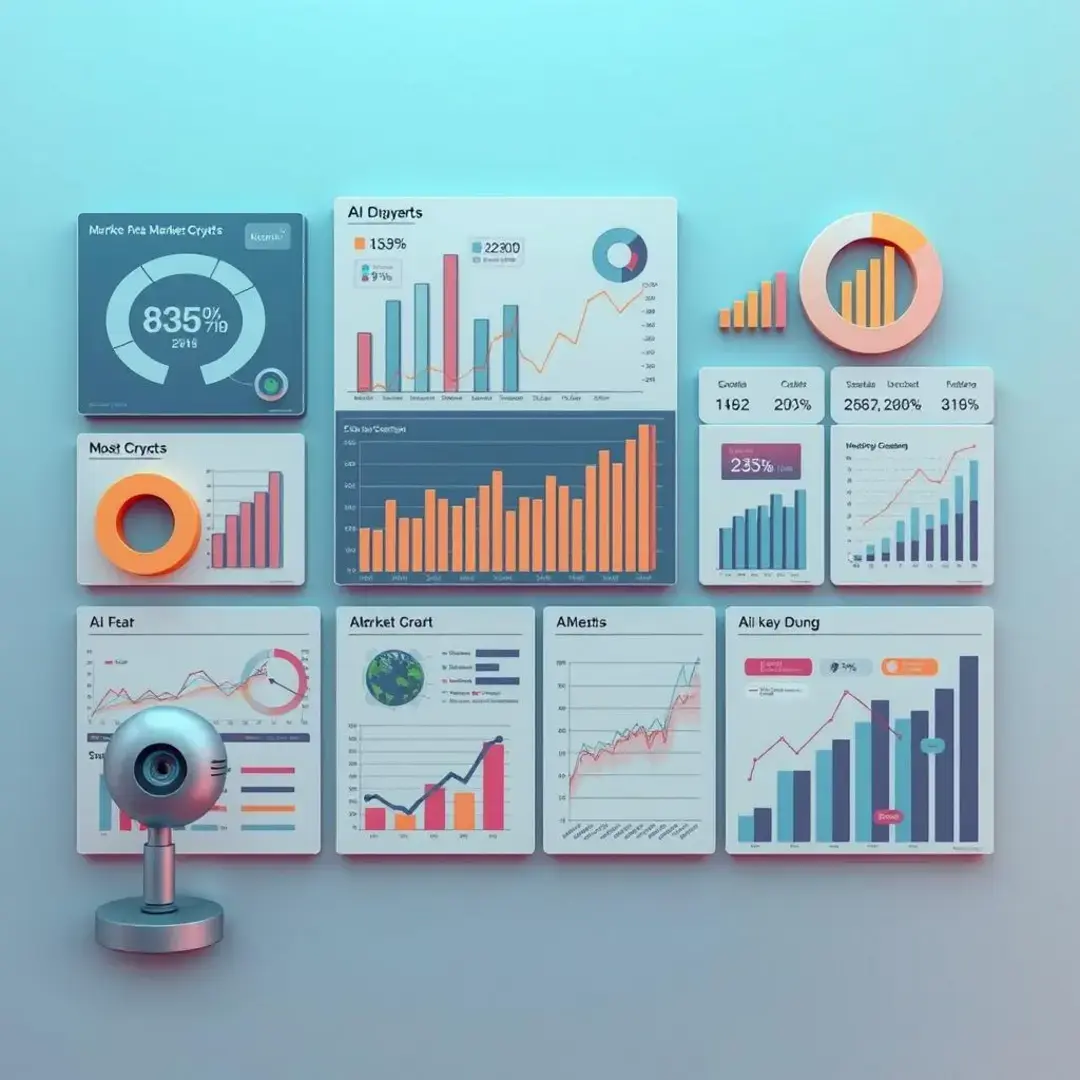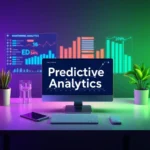Market Trend Analysis
Introduction

Overview of Market Trend Analysis in Predictive Analytics
Market trend analysis involves examining historical data to identify patterns and predict future market behavior. For advanced users, it means delving into complex datasets to extract insights that can drive strategic decisions. This analysis goes beyond mere observations; it demands a thorough understanding of various analytics tools and methodologies.
Predictive analytics plays a crucial role by utilizing statistical algorithms and machine learning techniques to forecast outcomes. It transforms raw data into actionable insights, enabling businesses to anticipate market shifts and respond proactively. By integrating predictive analytics into market trend analysis, organizations can enhance their strategies and optimize decision-making processes.
Key Trends in Market Trend Analysis

Emerging Trends
The integration of artificial intelligence (AI) and machine learning (ML) is revolutionizing market trend analysis. These technologies facilitate the processing of vast amounts of data, allowing for deeper insights with greater accuracy. AI algorithms can identify patterns in consumer behavior that traditional methods might overlook, thereby enhancing predictive capabilities.
In today’s fast-paced market environment, real-time data analysis is essential for timely decision-making. Predictive modeling techniques enable businesses to react to trends as they emerge rather than relying solely on historical data. This capability leads to more agile strategies that align with current market conditions.
There is a growing emphasis on not only predicting future outcomes but also prescribing actions. This dual approach allows businesses to not only anticipate market changes but also formulate strategies to leverage those insights. As organizations strive for competitive advantages, the ability to act upon predictions becomes increasingly vital.
Industry Impact
Market trend analysis profoundly influences marketing and sales strategies. By understanding consumer preferences and behavioral patterns, businesses can tailor their marketing efforts to better meet customer needs. This targeted approach leads to increased engagement, higher conversion rates, and ultimately, enhanced revenue.
The insights gained from market trend analysis guide product development and innovation efforts. Companies can identify gaps in the market and develop products that fulfill unmet needs. This proactive stance not only boosts competitiveness but also ensures that businesses remain relevant in a rapidly evolving marketplace.
Market trend analysis reshapes investment decisions and risk management strategies. Investors can make informed choices based on predictive insights about market movements, significantly reducing financial risks. As a result, organizations can navigate uncertainties with greater confidence, securing better financial outcomes.
Challenges and Limitations
Despite its advantages, market trend analysis faces challenges such as data quality and availability. Poor-quality data can lead to erroneous predictions and misguided strategies. Furthermore, organizations often struggle to access comprehensive datasets, limiting the breadth of their analyses.
The complexity of data and the outputs from predictive models require skilled professionals who can interpret the results accurately. Misinterpretation can result in flawed decisions that may negatively impact a business’s trajectory. Continuous training and development are essential to mitigate this risk.
Ethical considerations around data privacy and usage cannot be overlooked. Organizations must ensure that they are using data responsibly and transparently. Failure to adhere to ethical standards can lead to legal ramifications and damage public trust, ultimately affecting a brand’s reputation.
Future Outlook

Future Developments
The future of market trend analysis is closely tied to advancements in AI and machine learning algorithms. New innovations will enhance the predictive power of these tools, resulting in more accurate forecasts and refined analyses. As capabilities grow, the potential applications in various sectors will expand exponentially.
Integration with technologies such as the Internet of Things (IoT) and blockchain will further enrich market trend analysis. The convergence of these technologies will enable businesses to harness real-time data more effectively, leading to smarter decision-making. Future developments will likely see a collaborative ecosystem where different data sources synergize.
The trend towards greater automation indicates a future where data-driven decision-making becomes the norm. Companies will leverage automated systems to analyze trends and execute strategies with minimal human intervention. This shift toward AI-driven operations will enhance efficiency and consistency in decision-making processes.
Market Predictions
Market predictions indicate robust growth in the market trend analysis software sector. As more businesses recognize the importance of predictive analytics, demand for sophisticated software solutions will soar. This growth presents opportunities for both established players and new entrants in the software market.
Users are increasingly seeking analytics solutions that are intuitive and provide actionable insights. As customer expectations evolve, service providers must focus on enhancing user experience and simplifying complex functionalities. Suppliers that adapt quickly to these changing demands will gain a competitive edge.
The competitive landscape is poised for transformation as businesses leverage advanced market trend analysis. Organizations that invest in this technology will not only stay ahead of competitors but also redefine market standards. As analytics becomes a core part of strategic planning, traditional boundaries between sectors may blur.
Potential Impact on Users
For users, the integration of advanced market trend analysis means improved accuracy and efficiency in decision-making processes. Enhanced predictive capabilities enable users to make informed choices that align with market realities. This shift is expected to result in better outcomes across various business functions.
Users will benefit from a heightened understanding of market dynamics, driven by comprehensive data analyses. With clearer insights into consumer behavior and trends, organizations can pivot their strategies effectively. This enhanced knowledge fosters an environment of adaptability and continuous improvement.
As insights from market trend analysis translate into innovation, users will encounter new opportunities for growth. Businesses that are proactive in applying analytics will be better positioned to capitalize on emerging trends. This proactive approach not only drives growth but also fosters a culture of innovation within organizations.
How to Choose the Right App

Step-by-Step Guide
Begin the selection process by assessing current analytical capabilities. Understanding existing tools and skill levels within the organization helps to identify gaps that need addressing. This evaluation sets a clear baseline for what to look for in a new application.
After assessing capabilities, define your requirements and priorities. Consider factors such as reporting needs, user access levels, and specific analytical tasks. A clear requirements list will guide vendors in showcasing how their solutions can meet organizational needs.
Next, evaluate various market trend analysis apps based on the defined requirements. Request demos or trial versions to test functionalities and usability. Engaging with peer reviews and case studies will also provide valuable insights into how different solutions perform in real-world scenarios.
Finally, implement the chosen app and integrate it with existing systems. Proper planning during the integration process will minimize disruptions. Training staff on the new tool is crucial for ensuring successful adoption and maximizing the app’s benefits.
Conclusion

Market trend analysis, driven by advancements in predictive analytics, is transforming decision-making across industries. By understanding key trends, future outlooks, and practical considerations for app selection, organizations can position themselves for success. Continuous adaptation and innovation in this field will empower businesses to navigate market changes with confidence and agility.
Factors to Consider
Choosing the right market trend analysis app begins by assessing specific business needs and objectives. Businesses must clearly understand what they hope to achieve with analytics tools. Identifying these goals early will streamline the selection process, ensuring compatibility with organizational strategies.
Data integration is a critical factor to consider when selecting an app. The chosen tool should seamlessly integrate with existing data sources and systems. Compatibility ensures that businesses can leverage their current data effectively, maximizing the value generated from analytics.
The user-friendliness of an application can significantly impact its adoption within an organization. Tools that are easy to implement and use tend to see higher acceptance rates. Prioritizing ease of use simplifies training and accelerates the time to achieve desired outcomes.
Investing in a scalable solution safeguards businesses against future growth challenges. As organizations evolve, their analytics needs may expand. A future-proof app will accommodate growth by offering additional features or improved capabilities without necessitating a complete overhaul.





